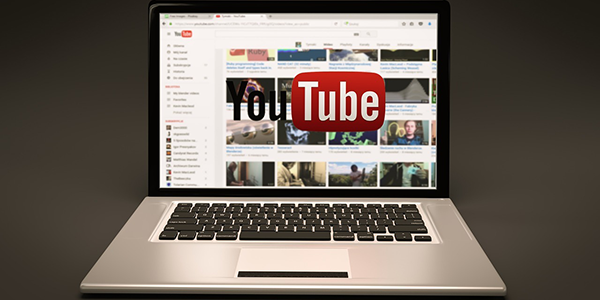 |
||||||||||||||
|
||||||||||||||
| TV Networks Side-Eye Amazon and Nielsen Streaming Deal |
 |
| While audiences around the country are preparing for the premiere of Thursday Night Football, behind the scenes, TV network executives and the Video Advertising Bureau are side-eyeing Amazon and Nielsen's streaming data deal. Nielsen plans to integrate Amazon Prime's streaming data into its audience measurement tools starting on the premiere of Thursday Night Football. Flag On The Play: TV networks and the VAB allege bias against Nielsen and the Media Rating Council, who audit the accuracy of media measurements. More specifically, they are questioning the speediness of the audit, which the MRC considered on August 30. "What's at stake could be the future of who owns the rights to televise the biggest-ticket sports leagues, tilting the playing field further to well-heeled digital platforms, should Amazon benefit from a substantial ratings boost by trading on its data when other media companies can't," said VAB CEO Sean Cunningham. Network executives perceive the new approach by Nielsen as merely affixing a third-party endorsement onto Amazon's first-party data, a step that's considered unparalleled in the realm of TV measurement. Although Nielsen presented correspondences indicating its willingness to include server data from other content providers with streaming services for measurement purposes, the executives assert that Nielsen has yet to furnish them with the requested information regarding the implementation process. |
| A couple of factors are at play here — favoritism of big tech, distrust in regulators, and accusations of inaccurate metrics. Allegations of Favoritism. Networks have expressed concerns that Amazon receives preferential treatment in data integration. The Vice President of the VAB, Sean Cunningham, believes Nielsen may be biased towards Amazon to secure business with major streaming platforms, potentially impacting revenue from traditional network players. This is not the first time, and most likely won’t be the last, that the industry has accused Amazon of trying to monopolize a market. Some industry experts predict that Amazon might become the new Google. Eliza Nevers, Chief Product Officer, Lotame, wrote, “Amazon is the new (and improved) Google. While the latter holds its death grip firmly on the ad products side of the business, Amazon not so quietly builds up an ever-growing tech stack to cover all marketing needs…The question remains whether these moves will put it in the antitrust crosshairs or if they can keep flying under the radar of government scrutiny, unlike their compatriots at Meta, Twitter, and Google.” Nielsen's Response. Is this move in the CTV measurement space another notch in Amazon’s goal toward ad tech domination? It’s possible, but Nielsen vehemently denies that they give Amazon preferential treatment. They maintain that other networks and streaming platforms have the same opportunity as Amazon. “This is a capability not just for Amazon, but something we are offering for any client with a similar need with live streaming programming,” said a Nielsen representative. Nielsen Audience Measurement CEO Karthik Rao doubled down on this sentiment in an open letter to VAB VP Sean Cunningham. He wrote that Nielsen looks forward to integrations into their measurement in the near future. Tameka Kee, Deputy Managing Director, Coalition for Innovative Media Measurement, believes that the MRC signing off on Nielsen's methodology for measuring streaming viewership using Amazon data could be major. “There's currently no standard for quantifying the value of a streaming audience — methodologies vary by channel, by platform (i.e. set-top box or smart TV), and of course by measurement provider (i.e. Nielsen or Comscore or iSpot),” said Kee. “Debates about whether the MRC is relevant, too powerful (or not powerful enough) aside, this could be a major step toward standardizing how streaming audiences are measured — and thus bought and sold — which is something that media buyers, in particular, have been asking for.” |
|
| The Commerce Media Opportunity | ||
| Advertisers are set to spend $125.7 billion with retail media properties and networks in 2023 according to GroupM, growing to represent 15.4% of total ad spend by 2028 — even surpassing TV. The momentum of this trend has sent disruptive waves throughout the digital advertising landscape, growing at a pace that outstrips both search and social media. And that's just a subset of the larger commerce media opportunity, which McKinsey puts at $1.3 trillion in enterprise value in the US by 2026, including $50 billion for publishers. But what is commerce media, and how do publishers tap into this huge opportunity? |
||
| While retail media focuses on brand-funded advertising on retailer sites, commerce media expands the scope, leveraging commerce signals to find consumers on the open web across their buying journey. In this way, commerce media enables shoppable moments to happen everywhere. Publishers need access to powerful commerce data and innovative ad formats to help advertisers find and engage customers at all stages of the shopping journey, driving outcomes and maximizing return on ad spend. To take advantage of this opportunity, publishers need an SSP that has been built to access and activate against commerce data. Criteo Commerce Grid is the only SSP purpose-built with this in mind. It enables publishers to enrich inventory with commerce signals to maximize advertiser outcomes at scale. It also equips publishers with tools to unearth valuable insights about the way their audience is shopping, opening the door to new opportunities for both advertiser partnerships and editorial strategies. |
||
|
||
| The Next Ad Crime Wave, Brought to Us by Generative AI |
| The News: Digiday recently summed up a host of ills facing the open programmatic markets and the fraudsters who run rampant there. While ad fraud is as old as digital advertising itself, the problem is getting worse thanks to AI. A Costly Challenge: Fraud is a pernicious challenge. “The current $88 billion open web programmatic media ecosystem is rife with waste, but advertisers could generate as much as $20 billion in efficiency gains by implementing certain steps,” the ANA said when it released its Programmatic Media Transparency report. Two factors are turbocharging the fraudster’s ability to bilk the advertisers’ budgets: made-for-advertising (MFA) websites and generative AI. According to the ANA report, MFAs represent 21% of impressions and 15% of ad spend. Generative AI is a gift for fraudsters who want to get in on the MFA racket. They can use it to spin up MFAs and offer that inventory in the open markets. In addition to creating fake websites, generative AI is also helping click farms drive efficiency by replacing humans who click on ads with smarter bots. “Think of AI having the superpower to amplify audience fraud in programmatic,” writes Antoinette Sui, in Digiday. Others aren’t as worried about bots as much as they are more sophisticated crimes. “Bot farms are not the most sophisticated approach to impression and click fraud anymore. Ghosting behind real users and stuffing hidden ads (e.g. mobile apps spoofing CTV) seems to be the new state-of-the-art attack. As AI makes all coding easier and more accessible (among many things), it will give less technically sophisticated criminals the capacity to exploit these latent vulnerabilities in the ad tech supply chain,” Louis-David Mangin, CEO and Co-Founder of Confiant told AdMonsters. |
| The open programmatic markets are a vital source of revenue for many publishers, especially smaller, niche, and multicultural ones. What’s more, these publishers attract audiences that might not be reached through traditional mainstream channels at the same scale. If brands don’t trust the open markets, these vital publications can be a risk. Fraud aside, it’s likely that many advertisers won’t want their ads near AI-generated content, and will include human-generation content as a campaign criteria. “Ad buyers navigating these placement challenges will need to make smart buying decisions across all types of web properties and media channels while also communicating their content preferences when serving their ads. In the coming months and years, we will see most buying platforms having customers asking for a way to avoid buying ads on AI-written content, or at least give the ability to know how many of their impressions served on this content and the demands for this are already showing from the big media groups and most sophisticated ad buyers,” said Zach Edwards, Senior Manager, Threat Insights at HUMAN Security. |
| Scathing YouTube Kid's Ad Placement Not Hurting Google's Ad Revenue |
 |
| Despite recent reports of ads running in potentially inappropriate places on YouTube, Google has avoided a major brand exodus as the tech behemoth hasn't experienced a hit to its U.S. ad revenue in August, according to Sensor Tower, an ad analytics firm. However, the reports from independent ad auditing firm Adalytics have prompted advertisers to evaluate Google's ads platform and YouTube strategy critically. While Google maintains that its ad platform prevents sophisticated audience targeting and data collection on "made for kids" videos, advertisers remain skeptical. Despite the controversies, Google has been working behind the scenes with advertisers to address concerns and prevent a large-scale brand departure, leveraging its experience in managing previous brand crises related to YouTube. Advertisers are considering adjusting their strategies by creating bespoke filters, using inclusion lists, and adopting more contextual targeting measures to ensure brand safety and appropriateness in their ad placements on YouTube. |
| Around the Water Cooler |
 |
| OpenAI Faces GDPR Complaint for Alleged Data Protection Breaches A privacy researcher filed a complaint against OpenAI under the GDPR, accusing the company of data protection breaches. The complaint alleges that OpenAI mishandled user data and violated privacy standards. (Tech Crunch) Buyers Face Difficulty in Sourcing High-Quality Video Content via Open Auction Buyers are encountering obstacles in their quest for premium video content through open auctions. As the demand for quality video rises, the struggle for premium content resonates within the open auction model, underscoring the demand for novel solutions to streamline content discovery. Some industry experts suggest that direct deals with publishers might be the best way to avoid unviewable, sound-off video inventory. (Ad Week) Barstool Sports Implements Layoffs Another round of media layoffs? Barstool Sports has initiated a round of layoffs, a decision that founder Dave Portnoy has openly admitted to being difficult and regrettable. (Deadline) TikTok Surpasses Instagram in User Engagement, Yet Trails in Advertising Revenue TikTok surpassed Instagram’s user engagement metrics, with more time spent on its platform by US adults. Despite this surge in popularity, TikTok still lags behind Instagram in generating advertising revenue. (Business Insider) GenAI Content Deemed Devoid of Copyright Protection A judge ruled that content generated by AI platform GenAI is not eligible for copyright protection. This verdict raises essential questions about the intersection of AI-generated content and intellectual property law, setting a precedent that could have far-reaching implications for the digital content landscape. (Ad Week) |










